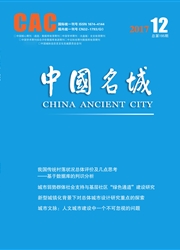

 中文摘要:
中文摘要:
改革开放以来,工业化与城镇化成为我国经济快速增长和社会全面发展的主要驱动力。城乡规划、交通基础设施与公共服务的建立促进了城乡一体化发展,缓解了城乡二元结构矛盾。但由于我国人口众多,基础设施建设不足,城乡化面临的主客观因素复杂,发展协调性问题日益突出。大城市尤其是百万人口以上的特大城市,城市盲目蔓延,生态环境污染与破坏严重,发展严重不协调。针对我国特大城市发展问题,对其发展背景、模式构建等根本性问题进行初步的探索研究,以全面促进特大城市健康可持续发展。
 英文摘要:
英文摘要:
Industrialization and urbanization are the driving force of economic growth and social development, since China carried out its policies regarding reforming and opening. Due to a huge population, inadequate infrastructure and some other subjective and objective factors, the urbanization was too quick and out of order in some places, which brought a series of problems and challenges. The realistic reflection targets: the urbanization rate was arguably inflated, water and soil resources were over consuming, urban and rural economy grew very disequilibrium. To promote regional coordinated development and achieve sustainable development of metropolis, this paper studied the developing background, challenge and coordinated development model.
 同期刊论文项目
同期刊论文项目
 同项目期刊论文
同项目期刊论文
 期刊信息
期刊信息
